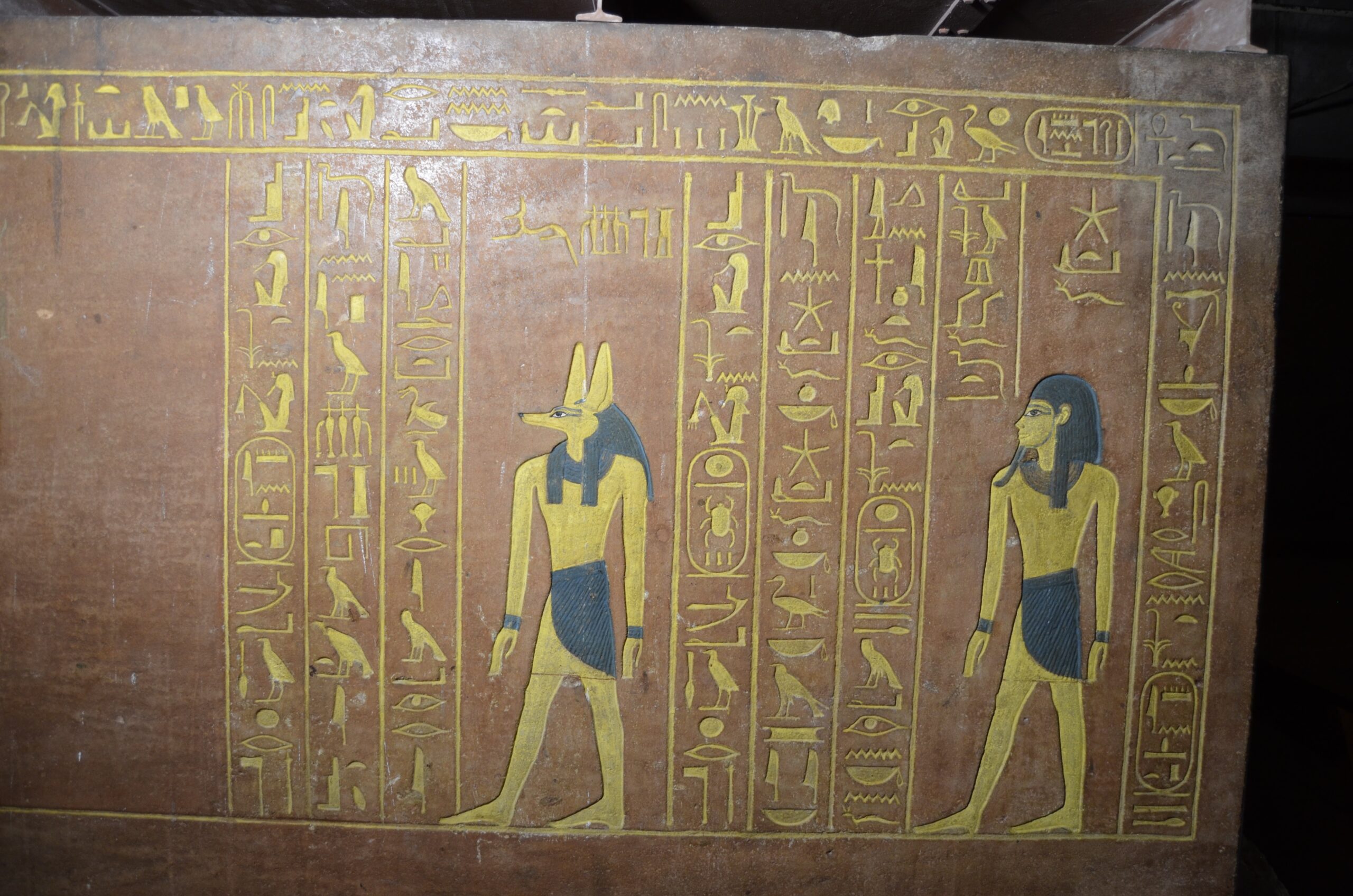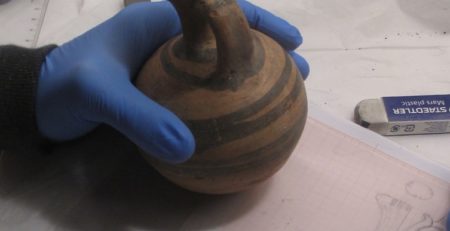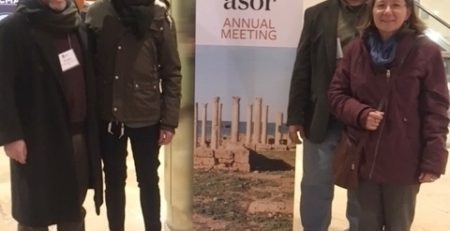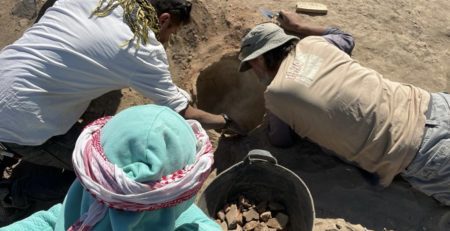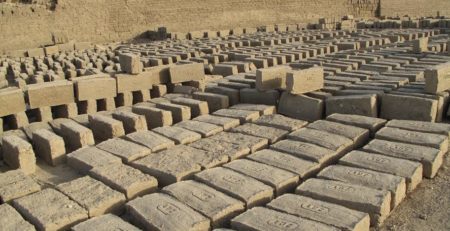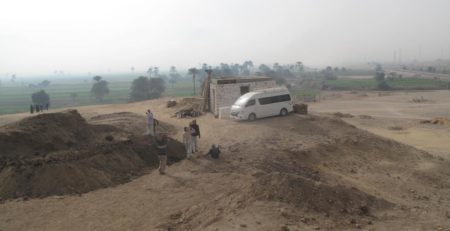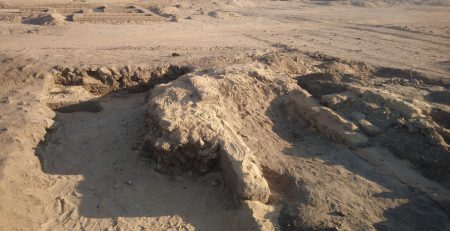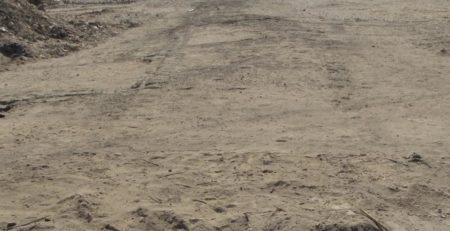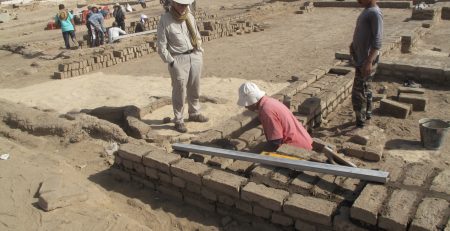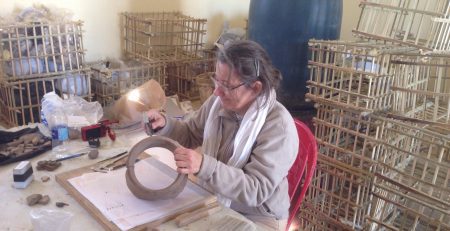Valley of the Kings, Week 3: May 17 to May 21, 2025
This week was the team’s last week on site and in Luxor. Salima Ikram and Nicholas Brown completed the preliminary study of the animal meat offerings. Additionally, Shymaa Mandour, working from home, began the process of epigraphically recording the workmen’s marks from the tomb. Using photos taken by Nicholas in the field, Shymaa builds an orthographic view of the wall from a photogrammetry 3D model, which she uses to draw her copy of the worker’s marks. Her work is essential for better understanding the processes and decisions that the Deir el-Medina crew made while building a royal tomb.
Towards the end of the week, the team focused on rehousing everything in proper storage for their long-term preservation and care. The project to rehouse the artifacts from Chamber Jb involved wrapping all of the meat offerings in acid free tissue paper, storing them in wooden crates, labeling the crates, and then covering over everything with linen to mitigate dust and debris. Additionally, the team took time to carefully pack up the “robber’s rope” remains, replaced the child mummy in a modern wooden box for its protection, and they carefully sorted and stored the new finds from the sieving of the floor debris, which they hope to study next season.
The biggest news this week was the installation of a steel door for the on-site storage in the tomb. The door will help to protect the antiquities inside the side chamber (Chamber Jb), as well as provide easy entry for Ministry of Antiquities officials as well as future researchers to access these important artifacts for consultation and study.

Figure 1: the team (Nicholas Brown, Saad Kenawy Mohammed, and Salima Ikram) working in KV35, the tomb of Amenhotep II.

Figure 2: Preliminary Drawing by Shymaa Mandour of the workmen’s marks as found in part of the Burial Chamber (Chamber J).

Figure 3: Some of the packed crates that contain the newly stored animal meat offerings from KV43.
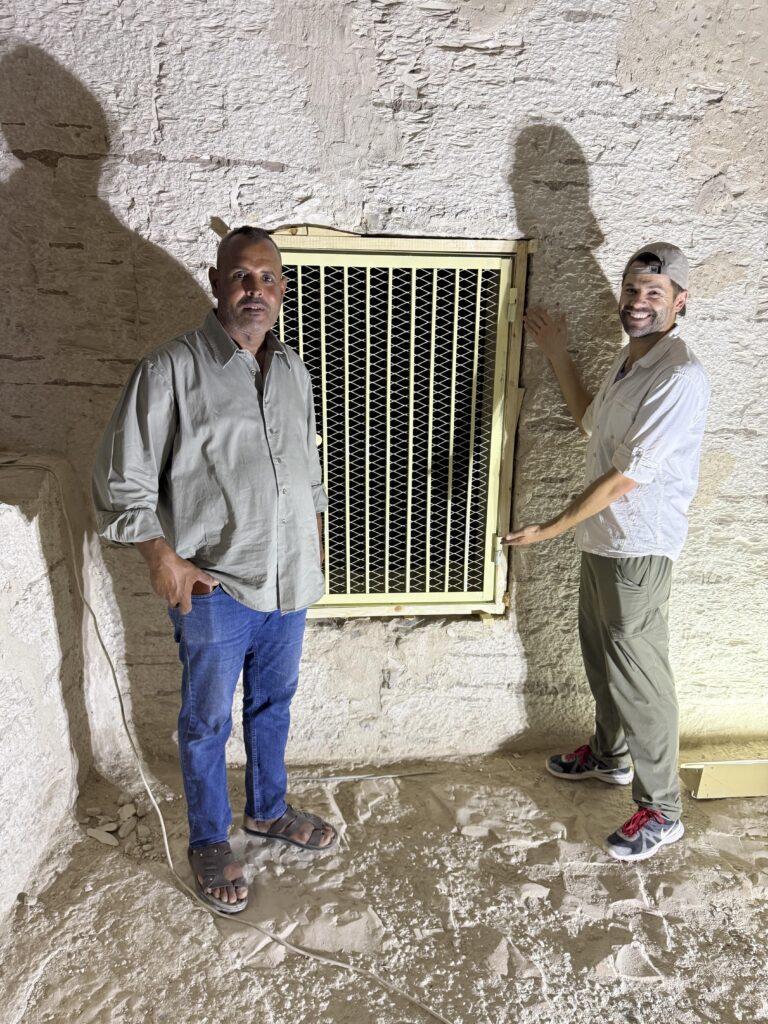
Figure 4: Mohamed Saleh (of ARCE Luxor) and Nicholas Brown show off the newly installed security steel door for the on-site storage magazine in KV43.
Acknowledgements:
The success of the season was due to the skill and hard work of many individuals. It was our pleasure to work with our colleagues from the Ministry of Tourism and Antiquities as well as the Luxor Antiquities Inspectorate. From the Cairo Office, we would like to thank the Minister of Tourism and Antiquities, Sherif Fathi, the Secretary- General of the Supreme Council of Antiquities, Mohamed Ismail Khaled, the Supervisor of the Permanent Committee of the Antiquities Department, Hani Abdullah el-Tayeb, the General Director for the Egyptian Committee, Mostafa Hussein Abdelrahman, and the Head of the Egyptian Antiquities Sector, Mohammed Abdel el-Badiya. From the Luxor Inspectorate, we would like to thank the General Director of Luxor Antiquities, Abdelghaffar Wagdy, the supervisor of the West Bank Antiquities, Bahaa Gaber, the Head of Foreign Missions in Luxor, Ramadan Ahmed Ali, the Director of the Valley of the Kings, Husein Fawzy, Valley of the Kings Inspectors Mahmoud Soliman and Abd Elghani Eltaher, and our Site Inspector, Saad Kenawy Mohammed.
We would also like the thank the Ancient Egyptian Heritage and Archaeology Fund, the American University in Cairo, and Yale University for providing our research project with last-minute funding to run the 2025 study season. Additionally, we would like to thank the following friends and colleagues for their research assistance and support: Nadine Moeller, Greg Marouard, John Darnell, Alberto Urcia, Sergio Alarcon Robledo, Andre Veldmeijer, Carrie Arbuckle-MacLeod, Claire Malleson, and David Aston. Institutional support was provided by the American Research Center in Egypt, to whom we are very thankful for their time and efforts; thanks are due to Mary Sadek, Shabaan Mohammed, and Mohammed Saleh.

